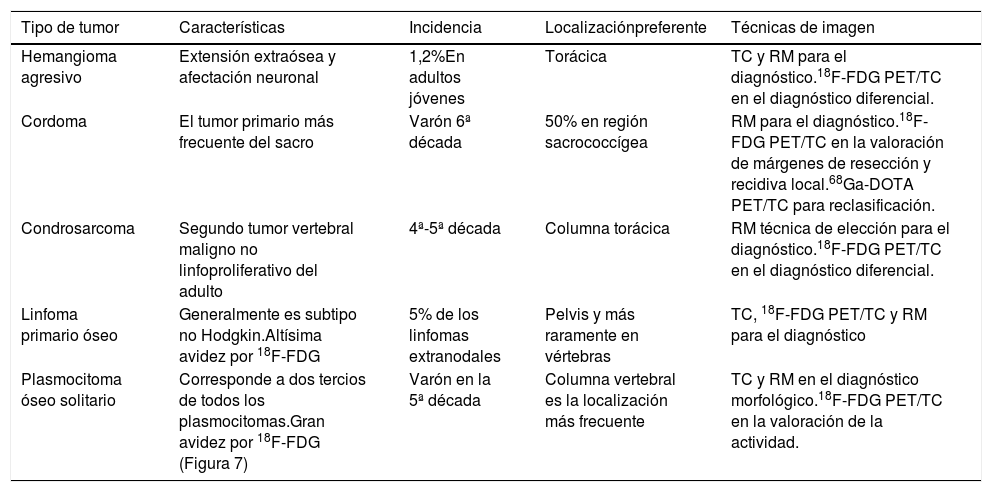Los problemas clínicos en la columna vertebral humana siguen siendo frecuentes en nuestra sociedad, con frecuencia provocan dolor y también pueden limitar los movimientos. El dolor de espalda es una entidad clínica muy común, aunque difícil de diagnosticar debido a su naturaleza multifactorial. Existen múltiples procesos que pueden alterar la estructura de la columna, lesionar vértebras y/o el tejido que las rodea. Para el estudio de la columna vertebral, es imprescindible el diagnóstico por imagen y dentro de este las técnicas híbridas moleculares, ya que juegan un papel importante proporcionándonos una imagen de fusión funcional y morfológica, entre ellas, la SPECT/TC es clave en el diagnóstico de la patología traumática y de estrés permitiendo localizar fracturas vertebrales ocultas, también resulta de gran utilidad en la patología degenerativa y postquirúrgica. Por otro, lado la PET/TC con 18F-FDG también juega un papel importante en el manejo y monitorización sobretodo de procesos infecciosos y oncológicos. En esta revisión se describe la aplicación de estas técnicas híbridas en las diferentes patologías de la columna vertebral y los hallazgos de sus imágenes, siendo de gran utilidad para la valoración diagnóstica y el manejo terapéutico del paciente.
Clinical problems in the human spine are still common in our society, often causing pain and can also limit movement. Back pain is a very common clinical entity, although difficult to diagnose due to its multifactorial nature. There are multiple processes that can alter the structure of the spine, injure vertebrae and/or the surrounding tissue. For the study of the spine, image diagnosis is essential, and within this, molecular hybrid techniques play an important role by providing us with an image of functional and morphological fusion. Among these, SPECT/CT is key in the diagnosis of traumatic and stress pathology, allowing us to locate hidden vertebral fractures, and is also very useful in degenerative and post-surgical pathology. On the other hand, PET/CT with 18F-FDG also plays an important role in the management and monitoring of infectious and oncological processes. This review describes the application of these hybrid techniques in the different pathologies of the spine and the findings of their images, being very useful for the diagnostic assessment and therapeutic management of the patient.



















